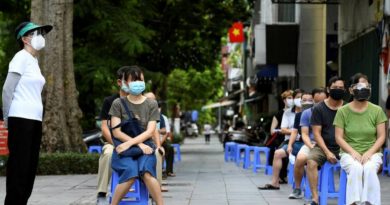Pekin doctor’s bout with COVID-19 an eye-opener – News – Journal Star
As a primary care physician at UnityPoint Health Pekin East, Dr. Tom Luft is accustomed to seeing the hospital experience through the lens of a caregiver. This summer, he had an opportunity to view an emergency room through a patient’s perspective because of the COVID-19 pandemic.
“It was really eye-opening for me,” Luft said. “I was very scared. In some ways, I was maybe more scared than people who aren’t in health care, because you kind of have that background knowledge and know all the bad things that could happen.”
As a health care professional, Luft knew he was at a higher risk than people working in other fields to contract the disease coronavirus causes. But when he began to experience a stuffy nose and a sore throat in early June, he dismissed it as a consequence of summer in central Illinois.
“Summer in Illinois is kind of an allergy time for me, so that wasn’t terribly unusual,” said Luft. “What clued me in that it wasn’t allergies was that I was taking some over-the-counter antihistamines, and I wasn’t really getting better.”
Even when Luft’s test for the novel coronavirus came back positive, he was not particularly worried, because his symptoms were initially mild.
“I was kind of thankful because I thought maybe I’d be a minimally symptomatic person,” Luft recalled. “I thought that would be good because maybe I could get some immunity and put some of the stress on me and my family behind us.”
Several days after he began to experience symptoms, however, Luft began to experience shortness of breath that could not be described as a mild event. When his wife remarked that he seemed to be breathing hard, Luft had not been aware of it and did not feel as if he was in any particular distress. But within 10 minutes, the severity had increased to the point where he required emergency treatment at UnityPoint Health-Methodist in Peoria and was hospitalized for several days.
“It certainly was scary,” Luft said. “Working in a hospital and helping patients and families through critical illnesses, I’d been on one side of that equation. I’d never personally been on the other.”
More than two months later, Luft continues to periodically experience shortness of breath and fatigue. His personal recovery routine includes multi-vitamins, meditation, and proper rest. He was initially not able to exercise because of the need for his lungs to recover, but is now able to at least take daily walks. He added that an important, but often underestimated, component to a COVID-19 patient’s recovery is the morale boost that can come from supportive families and friends.
“If you have a friend or family member who has this, it’s important to reach out to them and connect in any way possible so they maintain those social connections,” Luft said. “Whether somebody has a suspected case or a diagnosed case, when you’re quarantined, it’s very lonely. Our greatest strength as humans is also our greatest weakness during this pandemic. We’re social. It does make it very hard on somebody to quarantine, so I think reaching out to them by phone or through technology are really important.”
After nearly six months of observing social distancing and safety protocols due to concerns about the virus, it is understandable that some area residents may experience “pandemic fatigue,” according to Luft. But in spite of a very rational impatience to return to normal, pre-pandemic lifestyles, he said it is imperative that the region maintain vigilance.
“It’s hard to social distance and to not do the things we all did before,” Luft said. “But I think it’s still important to be doing those things. Cases are rising in our community. Over the last several weeks, we’ve seen a sharp increase.”



